LYONAEEC® Planes Made a
125,000ft-High Trip
2014/6/6 19:45:23 CAN NEWS
Summery:A research team from New Concept Aircraft (Zhuhai) Co., Ltd. innovated a new method to do testing and explore in the near space at a cost efficient way. Recently, two sets of near space micro laboratory modules built by this team, Near Space Pioneer 1 ("NSP-1") & Near Space Pioneer 2 ("NSP-2"), carried its experiment equipments and test materials, completed its owned near space scientific test flight, and successfully returned. NSP-1 returned from 28,027 meters (around 92,000 feet) altitude, and NSP-2 returned from 38,130 meters (around 125,000 feet) altitude.
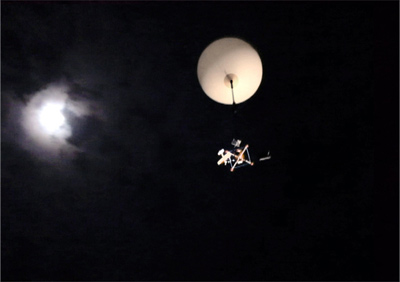
Near Space Pioneer 2 launched in the mid-night
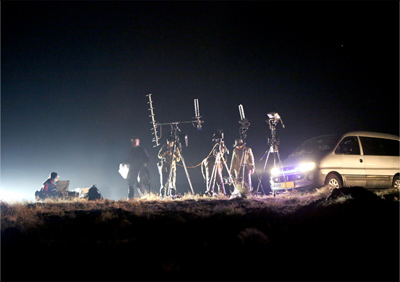
Portable ground station for "Near Space Pioneer"
At the midnight of September 20th, 2013, Tengger Dessert in Inner Mongoria, Near Space Pioneer 1 ("NSP-1"), a near space micro laboratory module, made its historic flight launch. The module with its experiment equipments, weighted 2,100 grams, and was carried by a special high-altitude balloon. "NSP-1" went through the strong turbulence below stratosphere, carried by 55m/s wind current and flied over approximately 100 kilometers horizontal distance, and eventually climbed up to 28,027 meters (around 92,000 feet) altitude. In its travel, "NSP-1" completed nighttime atmospheric environment detections and sent various real time data back to ground station. Finishing all tests, "NSP-1" returned with a special speed-controllable parachute passing through different turbulences at several atmospheric layers, finally landed at the expected landing point, and was retrieved by research crews awaiting nearby. At the following night of September 21st, 2013, the same launching location, another near space micro laboratory module Near Space Pioneer II ("NSP-2") (weighted at 1,860 grams) lifted off with another sets of test materials and equipments. Flied with the same approach but traveled longer distances, "NSP-2" completed its test missions and reached the near space altitude of 38,130 meters (around 125,000 feet), eventually landed safe and was retrieved successfully by research crews. At ground station, the research team observed the whole flight with real-time transmitted images and atmospheric data sent back from NSP-2, and they also completed the remote control test for equipments and materials, supported by the real time camera device on the module.
NSP-1 & NSP-2 are designed and built by New Concept Aircraft (Zhuhai) Co., Ltd. (short as NCA Zhuhai). This Zhuhai (A city, famous as one of China’s special economic zones) company has for years been dedicated in fundamental scientific research and applied technology innovation. The research team from NCA Zhuhai built both laboratory modules by miniaturizing the test equipments, reduced size and weight, improved energy efficiency, and integrated with functions like remote sensors, telemetry, image and data transmitters, and two-way remote communication sets, etc.
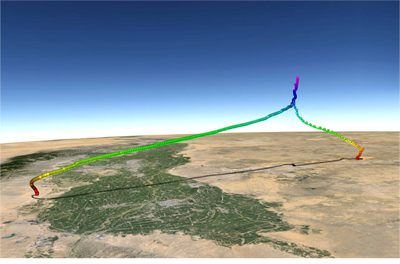
This innovation is groundbreaking and brings an easier way to near space research. In the interview to project leader Dr. Danny H. Y. Li, he mentioned, "In these flights, we aimed to test the basic functions of two systems, to test the auto-stablization of the system when moving in three-dimensional space, and to test if we could accurately and reliably retrieve the system. Thus, we only performed one round trip for each module into the near space, and they were both successful. As next step, we will test their ability of floating endured in a fixed position at upper air, and no doubt that would require applying an entirely new technology." While answering the question of why choosing to test at nighttime, he said, "At the mid-night, there is no direct radiation from the Sun. Compared with the daytime, the environmental aspects are different across atmospheric layers, for example, temperature and pressure. Therefore, we need to understand how flying objects are moving in near space altitude during the night, which would be one of the essentials to consider when near space aerostat system could perform long endurance and preset point flights across days and nights."
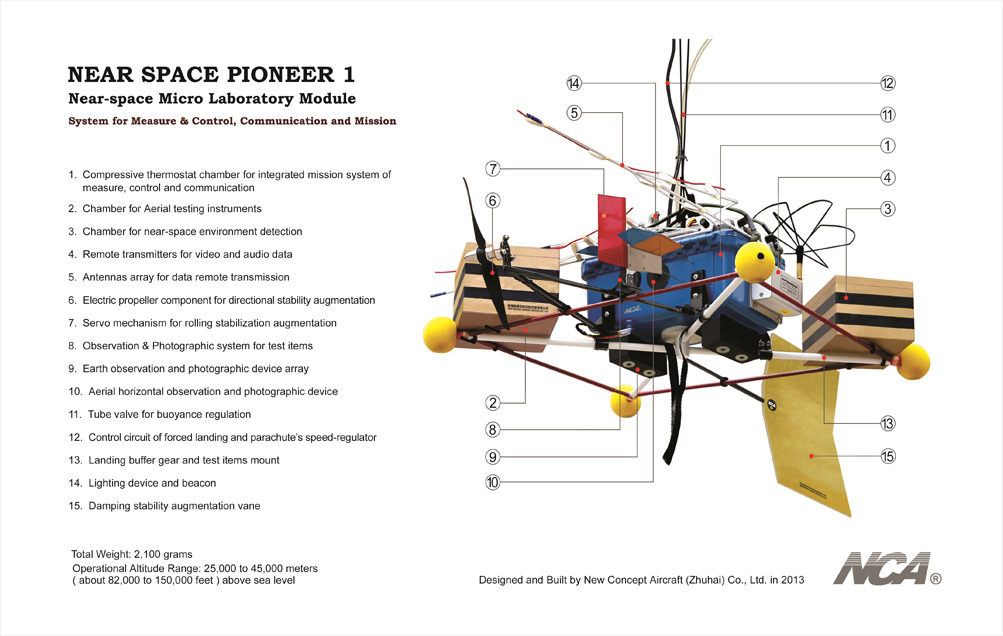
Near Space Pioneer 1 micro laboratory module
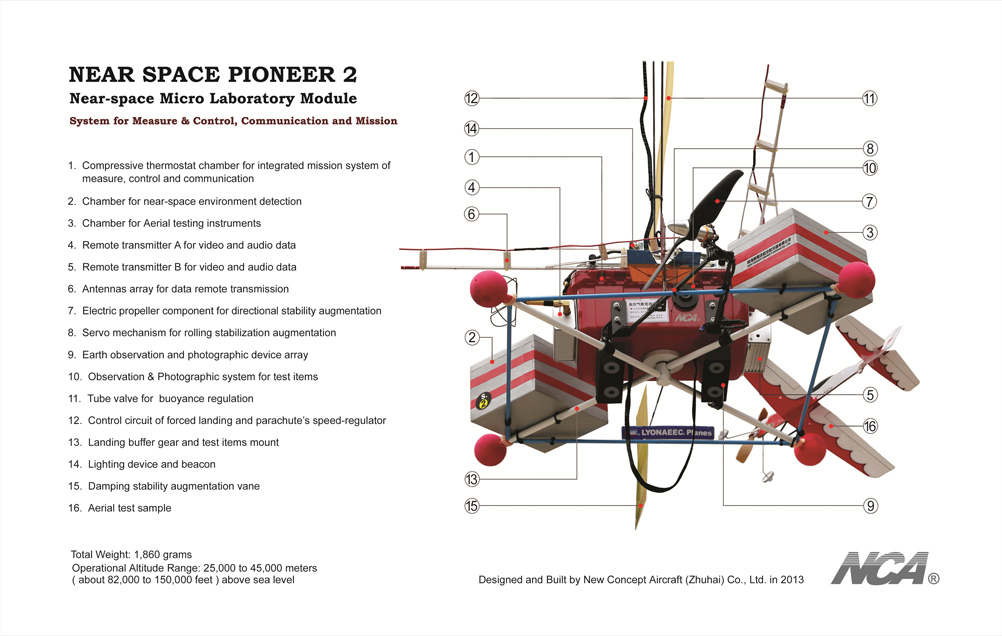
Near Space Pioneer 2 micro laboratory module
These flights were authorized by China Air Traffic Management Bureau, and ground supported by Alxa League Aerospace Vehicle Technology Co., Ltd. located in Bayanhaote, Inner Mongoria.
Why this project? NCA Zhuhai shared their views, "Recent years, there are more and more researches applying aerostat technologies to vision Near Space Tourism and High Altitude Platform Stations. But restricted by current technologies, most aspects in near space are still unknown. Our NSP could help to explore more about the near space, provide a low cost, easy and reusable platform to perform various near space test areas relevant to materials, equipments, power and energy etc. Also, the technologies applied in NSP could expand into terrestrial resources research and meteorology observations, and could potentially build as emergency platform stations for communication and observation during earthquake and wind storms, or set as high altitude platform stations in marine areas where communication infrastructures are difficult to build on.
At the end of the interview, Dr. Danny H. Y. Li said, "We're trying to precisely and consistently position a lighter-than-air aerostat system in the high sky, and it would need to be different from the current technique to adjust its position by deflation or releasing the ballast and round in the atmospheric circulation. It is still a common challenge, but unfortunately the key to evaluate if lighter-than-air aerostat system in the near space could commit its reliability and safety, also the key to evaluate if the commercialization of such system is feasible or not.”
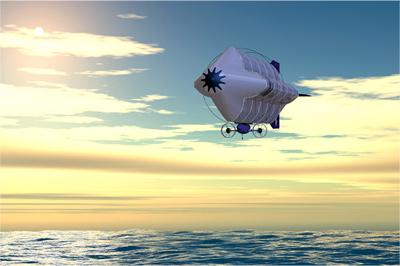
Transformable Airship
